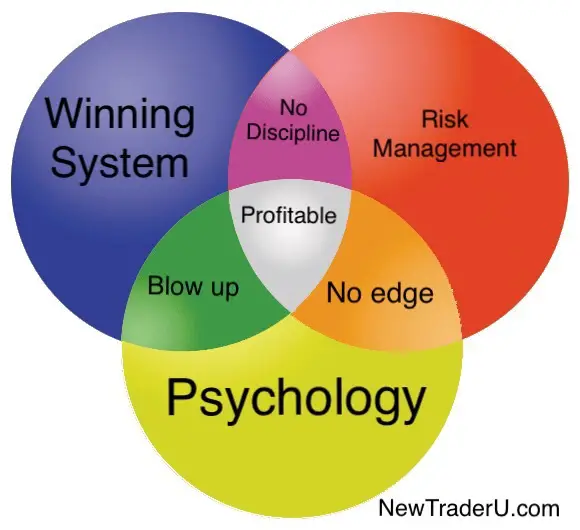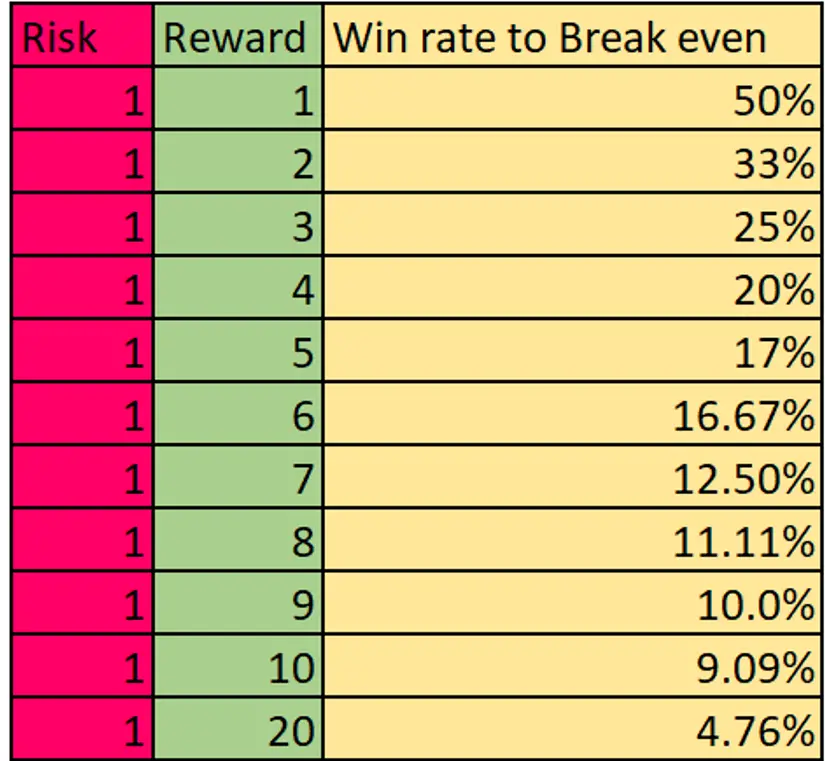
I got very lucky when I started out trading in the early 1990s as tech stocks stayed in uptrends and continually made new highs in price after each dip. Buying the dip and holding worked repeatedly much like it did in last few years in both stocks and crypto. However, after the dotcom bust of March of 2000 the stock market topped and began a long-term downtrend and bear market. I had to learn to earn my trading profits from the year 2000 on inside downtrends and trading ranges.
These are the five primary principles I used to get my capital back to all-time highs by 2003 and become a profitable trader for the past two decades.
Educate yourself before starting to trade.
If you rely on luck in your trading with no system and random entries and exits eventually your luck will run out. You should never be placing real money at risk in the market until you educate yourself on what works and what doesn’t over the long-term through most market conditions. Traders need to know what their edge is in the markets and how they will be making money. Discretionary traders need a consistent strategy for making money and mechanical traders need a quantified system with an edge.
Focus more on risk management than indicators.
New traders focus too much on technical indicators and economic indicators and too little on risk management. No matter what technical indicators you use there are still going to be losing trades and losing streaks. If you don’t manage your position sizing and stop losses you will not survive in the markets over the long-term and will eventually lose all your capital or at the least have a 50% drawdown or more. Proper risk management is more important than any technical indicator for your survival and profitability.
Focus on the larger market trend.
The larger market trend will determine whether your trading strategy works more than your opinions and predictions. Buying the dip is less likely to work in a downtrend, buying breakouts will fail in range bound markets, and selling short will lose you money most the time in uptrends. Your trading strategy must be in sync with the larger overall market trend through entry and exit signals.
The path of least resistance is in the direction of the market trend. It can be very expensive to fight the overall trend in the stock market. Bear markets eventually bring all stocks down and bull markets can keep making unexpected new highs in price. Most of your success will be based on your ability to identify and follow the trend.
Focus more on the risk/reward than winning percentage.
How big your wins are versus the size of your losses determine your profitability more than your win rate in trading. A few huge wins can make you profitable after a bunch of small losses. It’s more important to focus on the magnitude of your wins than being right on every trade.
At trade entry the risk/reward ratio measures a trades potential loss size versus the magnitude of potential profits. In backtesting the average of all the losses in a system in relation to all the average gains equals the risk/reward ratio of your system based on historical price action. For discretionary traders your stop loss versus your profit target quantifies your risk/reward ratio before entering a trade.
What your win rate needs to be for profitable trading is dependent on the risk/reward ratio your strategy creates over time. The higher your risk/reward ratio the lower your winning percentage must be to make money.

Looking at your stop loss versus your profit target for any trade can tell you whether the risk is worth taking. Most trades are only worth the risk of loss if you have at least a 1:2 or 1:3 risk to reward ratio based on your trading plan to manage the trade after entry.
Your risk is established by the placement of your stop loss that will show you that your trade is not going to work out and it’s time to exit while a loss remains small.
Your profit target on entry for where you think that price could go if the trade is a winner is where your potential maximum profit is located and can be used to establish the reward in your ratio. You can maximize the potential for capturing a big trend by being flexible and leaving your upside uncapped by using a trailing stop loss to take you out of a winning trade only when it reverses too much. By only exiting when price reverses you can create bigger winning trades and maximize rewards.
To psychologically create a good risk to reward ratio you need to be patient with winning trades and give them room and the opportunity to play out for the most profit possible. At the same time have no patience for losing trades and exit the moment you are proven wrong based on price action going where it shouldn’t go if the trade is going to work out in your favor.
Creating good risk/reward ratios with high probability entries and using stops to limit losses while letting winners run is the core principle of all profitable trading. Stop worrying so much about being right every time, learn to focus more on being wrong small and right big.
Fundamental analysis can help with your watchlist.
Fundamental analysis can identify what you trade and technical analysis can tell you when to trade it. Technical analysis can help with whether it’s time to take the long side of the short side of a trade. It’s possible to build your watchlist based on fundamental analysis whether it’s stocks, commodities, exchange traded funds, or bonds.
However, fundamental analysis will not help with timing. It’s technical analysis that will signal when it’s the best time to enter or exit a trade due to a trend in price action. You can have a better chance of making money on the long side of a stock with great fundamentals than a stock with terrible fundamentals but you still need to respect the price action. Is there something with terrible fundamentals that you want to sell short? Then at least wait for it to begin a downtrend. Only price pays and that is the purpose of technical analysis to identify the price action pattern. The highest probability trades happen when the fundamental and technical align together.
I became a profitable trader after doing the above five things and I hope these lessons help you too.

Image by Holly Burns